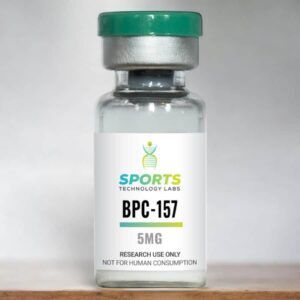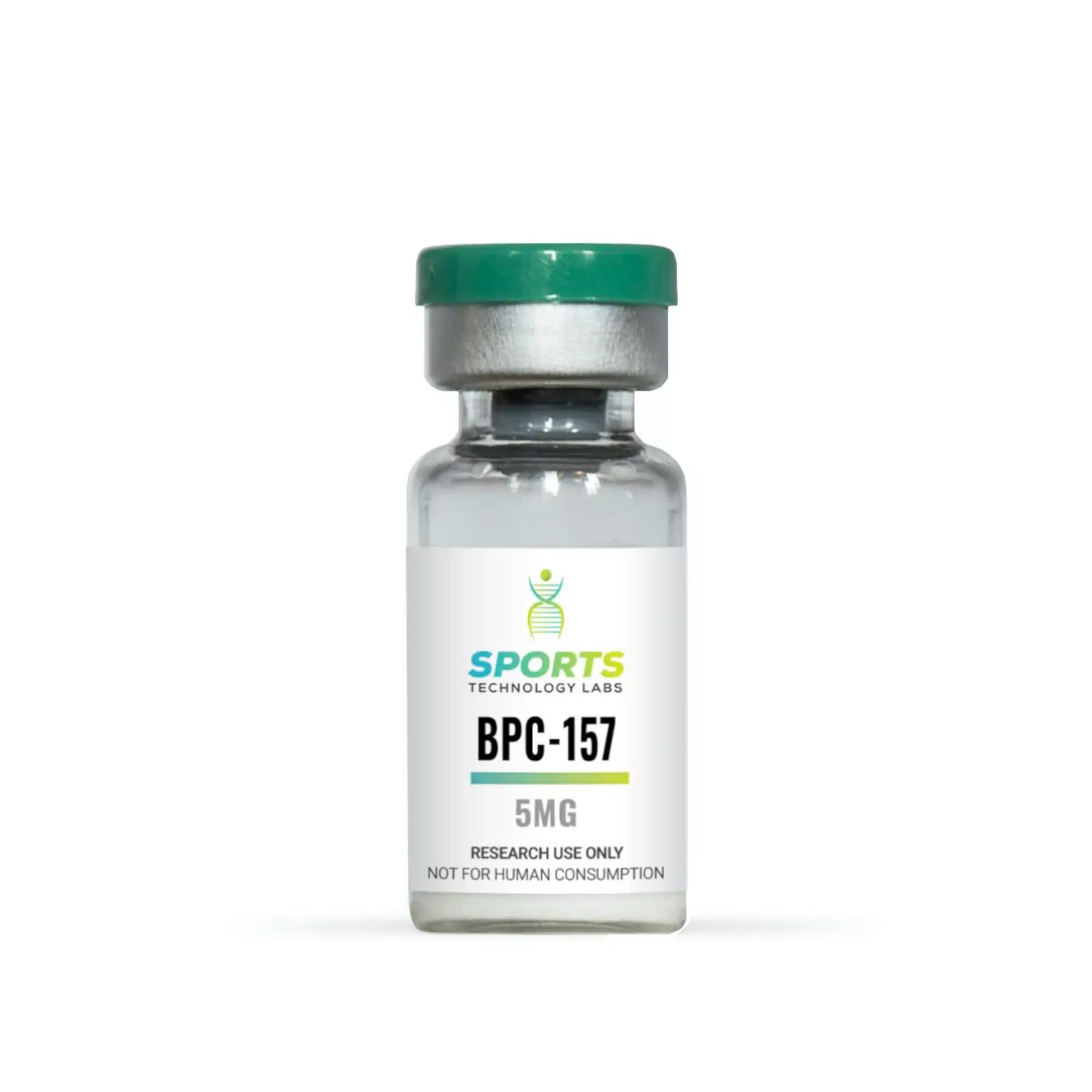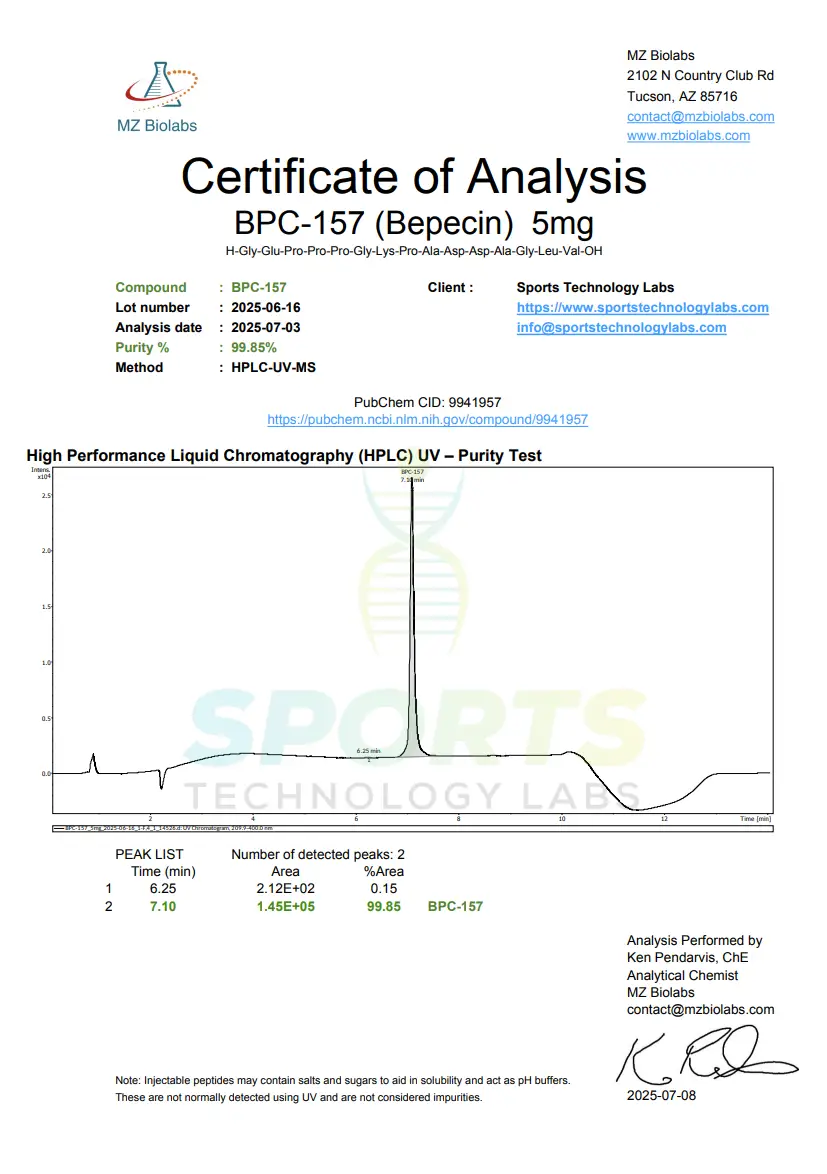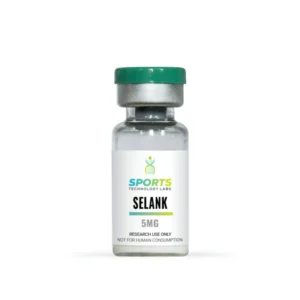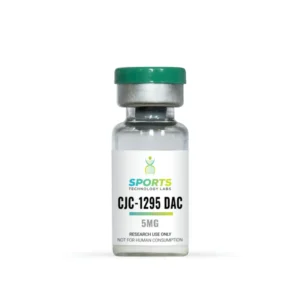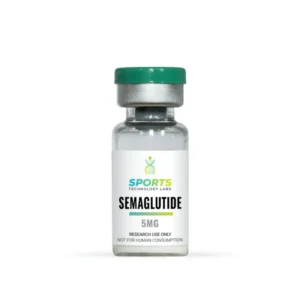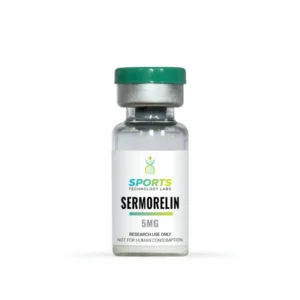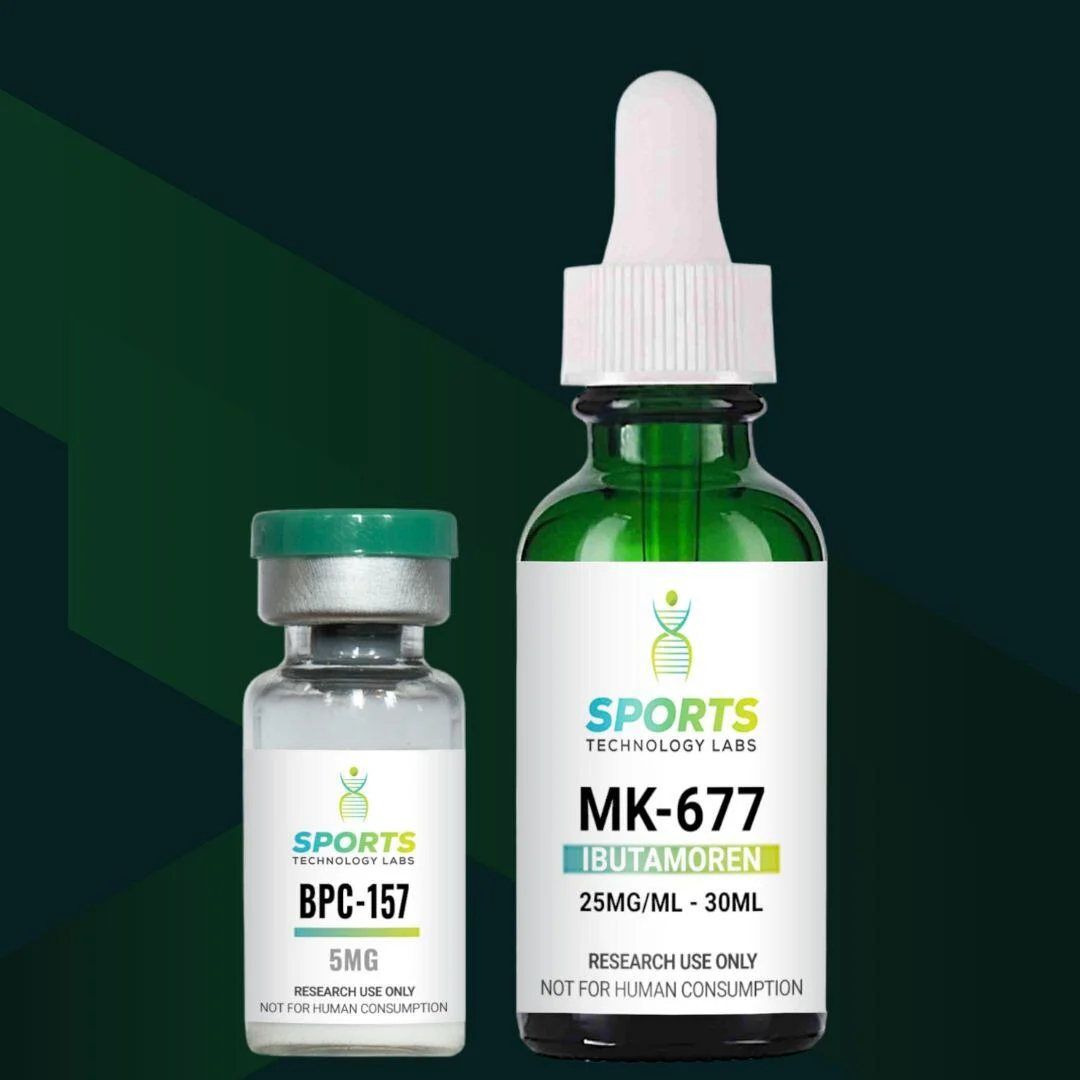High-Quality BPC-157 for Sale Online
Sports Technology Labs offers high-purity BPC-157 peptide for legitimate laboratory and research use. BPC-157 (Body Protection Compound-157) is a synthetic peptide derived from a naturally occurring protein found in human gastric juice.
This stable gastric pentadecapeptide is composed of 15 amino acids and has been investigated in animal studies for its role in musculoskeletal soft tissue healing, collagen synthesis, gastrointestinal protection, and peripheral nerve regeneration. BPC-157 is not approved by the U.S. Food and Drug Administration (FDA) for human use and is prohibited under the World Anti-Doping Agency (WADA) Prohibited List.
Sports Technology Labs ensures transparency and quality with third-party Certificates of Analysis for every batch.
Why Buy BPC-157 From Sports Technology Labs?
Sports Technology Labs is committed to providing high-quality research chemicals with full transparency. Unlike unregulated online sellers, Sports Technology Lab provides:
- Third-party laboratory testing (COA) for every batch
- Lyophilized glass vials stored under refrigeration for stability
- No discreet payment methods or mislabeling, only accurate, verifiable specifications
- 60-day money-back guarantee and fast shipping
- Free shipping on orders over $149 and additional discounts for cryptocurrency payments
If you are trying to figure out where to buy BPC-157 online, there are many options out there. Buying peptides from a randomly selected company is dangerous.
Most companies with peptides for sale, sad to say, do not test their products, or hide their certificates or contact information for their third-party labs from customers. What can they be hiding?
At Sports Technology Labs, you can find the highest quality BPC-157 for sale anywhere on the internet. When you buy peptides from Sports Technology Labs, you are choosing the highest quality products.
The purest peptides are tested and certified by accredited American third-party labs that accept phone calls to verify the validity of their certificates.
Our products are lyophilized in glass bottles and are stored in refrigeration to prevent degradation. We run a transparent business, with no discreet payment methods necessary and no misrepresentation of our products, only the highest quality research chemicals available online, secured by our 60-day money-back guarantee.
We offer free shipping on orders over $149, and if you need the products in a hurry, we offer express shipping as well. Customers who sign up for our email list get 10% off, and an additional 10% off for payment with cryptocurrency.
Sports Technology Labs is the best place to buy BPC-157 online because of our consistent, verifiable, high-quality products, safe bottling and packaging, fast shipping, and excellent customer service. And if you have any questions about our BPC-157 and other products, you can contact us, and we’ll respond as soon as possible.
Certificate of Analysis
All Sports Technology Labs peptides are third-party tested by MZ Biolabs, an independent laboratory based in Arizona. Each batch is analyzed for identity, purity, and concentration. A Certificate of Analysis (COA) is provided to verify that the product meets listed specifications.
- Date: 07/03/25
- Purity Level: 99.85%
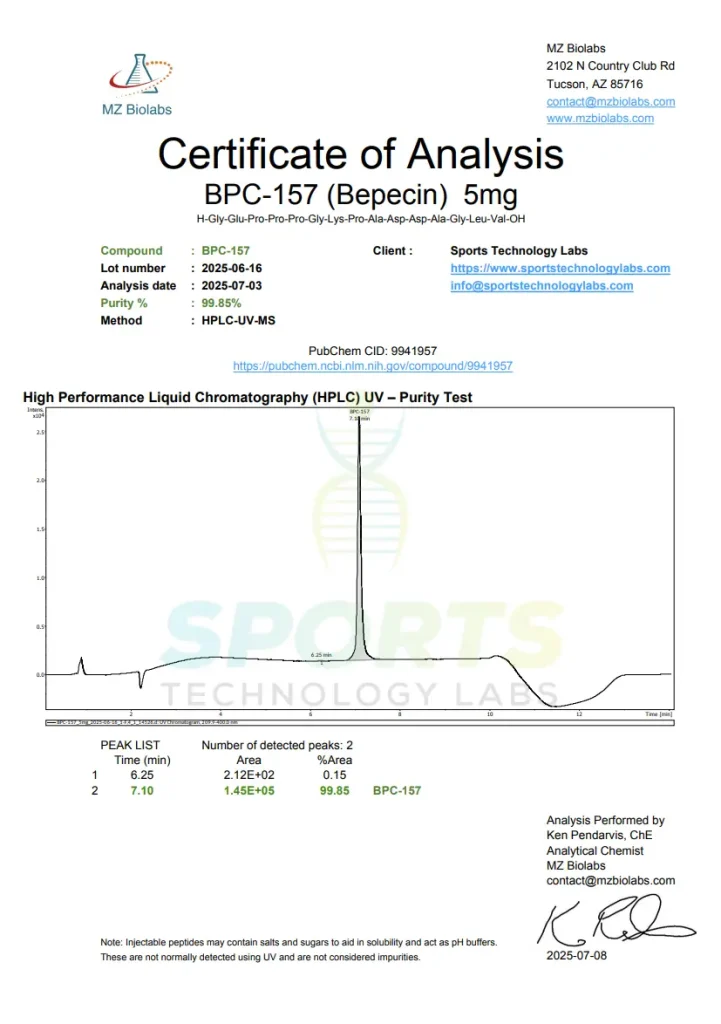
View all COAs at the bottom of this tab.
What Is BPC-157?
BPC-157 is a gastric pentadecapeptide derived from Body Protection Compound (BPC), a protein naturally found in the human gastrointestinal tract. As a synthetic peptide, BPC-157 has been widely studied in animal research for its regenerative effects across multiple tissues, including tendon healing, ligament healing, bone, muscle, and the gastrointestinal tract. It is of growing interest in regenerative and integrative medicine for its potential to accelerate healing and reduce inflammation.
In animal models, BPC-157 has demonstrated:
- Stimulation of fibroblast cell migration and proliferation, supporting connective tissue repair; BPC-157 may also promote cell tissue res and accelerate healing at the cellular level
- Upregulation of growth factors including vascular endothelial growth factor (VEGF), contributing to angiogenesis and vascular response
- Promotion of collagen synthesis and extracellular matrix remodeling
- Acceleration of tendon outgrowth, bone healing, and improved ligament healing
- Protection of the gastrointestinal mucosa and enhanced healing in models of inflammatory bowel disease
- Peripheral nerve regeneration after injury
- Reduction of oxidative stress and improved cell survival under injury conditions
- Other studies have demonstrated BPC-157’s effects on angiogenesis, cell growth, and tissue repair.
Important: While some patients in preliminary reports have described improvements in symptoms such as pain and inflammation, these findings are not yet supported by robust clinical trials. These effects have been observed in animal studies and in vitro experiments. BPC-157 has not been extensively studied in human clinical trials. There is insufficient clinical data to support any therapeutic use in humans.
Mechanism of Action
BPC-157, or Body Protection Compound 157, is a synthetic peptide investigated in preclinical studies for its regenerative and angiogenic effects across multiple tissue types. Its mechanism of action centers on promoting cell survival, enhancing cell migration, and facilitating tissue repair—key processes involved in musculoskeletal soft tissue healing and tendon healing. Research indicates that BPC-157 interacts with growth factors, most notably vascular endothelial growth factor (VEGF), to stimulate angiogenesis and support the formation of new blood vessels. This vascular response is critical for delivering nutrients and oxygen to damaged tissues, thereby supporting the healing process.
In studies involving inflammatory bowel disease and gastrointestinal tract injury, BPC-157 has demonstrated a promoting effect on epithelial repair and mucosal protection. The peptide’s ability to upregulate collagen synthesis further contributes to its role in tissue regeneration, supporting tendon outgrowth and improved structural integrity of healing tissues. Additionally, BPC-157 exhibits anti-inflammatory effects, reducing local inflammation and oxidative stress, which are often barriers to effective recovery.
These regenerative effects have been observed in a variety of research settings, including in vitro experiments and animal models. While the underlying mechanisms are still being elucidated, the compound’s influence on growth factors and cellular repair pathways has made it a continuing subject of scientific investigation. Limited clinical studies have been conducted internationally, but robust human clinical data are lacking. As a synthetic peptide not approved for human use, BPC-157 remains restricted to laboratory and research applications.
Scientific Research Applications (Preclinical)
Research on BPC-157 focuses on its regenerative effects in various systems, particularly:
- Musculoskeletal soft tissue healing: Enhancing fibroblast activity, collagen synthesis, and vascularization for tendon, ligament, and bone recovery in rat and chicken embryo models.
- Gastrointestinal tract protection: Strengthening the mucosal barrier, accelerating epithelial repair, and improving vascular response in models of esophagitis, short bowel syndrome, and colitis.
- Neuroprotection: Animal studies indicate BPC-157 may support neural recovery following traumatic brain injury and exposure to neurotoxins.
- Angiogenesis and vascular response: Upregulation of VEGF and increased formation of collateral blood vessels, which may enhance tissue regeneration.
- Systemic effects: Modulation of nitric oxide pathways, reduction of inflammatory markers, and antioxidant effects in various organ systems.
These applications are based on preclinical data. BPC-157 is not approved for clinical use or human consumption. All research must remain within controlled scientific and laboratory settings.
A recent systematic review of preclinical studies has highlighted the need for further research to determine the safety and efficacy of BPC-157 for future clinical applications.
Cellular Protection
BPC-157 helps to regenerate damaged tissue by causing fibroblast cells to multiply and migrate more easily and improving the synthesis of proteins such as collagen, fibrin, and elastin. Similar effects of BPC-157 peptide may be seen on endothelial cells, which are responsible for lining blood vessels.
Studies conducted on rats and chicken embryos found that BPC-157 significantly boosts the production of new blood vessels and the growth of collateral blood vessels, suggesting that BPC-157 could one day be used for stroke and heart attack subjects. Further investigation is needed on the cytoprotective effects of BPC-157.
Peripheral Tissue Healing
BPC-157 studies have shown positive findings in animal studies on tendon, ligament, bone, and skin burns. With connective tissue injuries, limited blood flow can hinder the delivery of fibroblasts and other wound-repairing cells to the injury site, limiting tendon healing.
According to research done on rats, BPC-157 has been shown to improve the growth factor in collateralization and density of fibroblasts around tendons, ligaments, muscle tissue, and bones after injuries take place, and promote vascular growth. Collateral blood vessel growth is also an area of keen interest concerning research on BPC-157 since vascular growth may significantly augment the wound healing process in tissues that are otherwise limited by poor blood supply, like ligament injuries.
BPC-157 has also shown effectiveness in counteracting corticosteroid-impaired muscle healing.
Antioxidant function
Animal studies have shown that BPC-157 functions as an antioxidant and can protect against oxidative stress. In a research study, when BPC-157 peptides were used on rats, they had lower levels of nitric oxide and malondialdehyde, two indicators of tissue damage due to free radicals. BPC-157 may have similar effects within mammal gastric juices, but clinical trials are needed.
This is further supported by additional research, which has shown that BPC-157 can decrease the production of reactive oxygen species in the gastrointestinal tract. Studies have shown that a modified form of Lactococcus lactis bacteria increased levels of BPC-157 in cell culture, indicating that BPC-157 may play a role in probiotic modulation of gastrointestinal wound healing.
Gastrointestinal Health
Since BPC-157 is a derivative of a natural compound in human gastric juices, it is of particular interest in clinical research on gut health and for treating inflammatory bowel disease, leaky gut, and stomach ulcers. BPC-157 peptide plays a role in the brain-gut axis and naturally strengthens and protects the mucosal barrier of the digestive tract. This form of tissue repair is what it is currently best known for. In a rat model of esophagitis, untreated for 12-20 months, when given directly into the stomach, BPC-157 peptide therapy instantaneously recovered disturbed lower esophageal and pyloric sphincter pressure, suggesting an accelerated healing process resulting from BPC-157.
It also antagonized other alcohol effects, including acute and chronic intoxication. In another study conducted on rats with short-bowel syndrome over 4 weeks, BPC-157 therapy yielded a significant increase in weight beyond preoperative values when administered orally or parentally.
Furthermore, villus height, crypt depth, and muscle thickness increased significantly with this in rats treated with BPC-157. Rats with ischemia and colitis in another study experienced significant improvements in blood flow and local nitric oxide utilization after administration of BPC-157, with virtually no remaining lesions and only minimal adhesions after only 10 days of treatment. More research is needed on the effects of BPC-157 on Crohn’s disease, gastric ulcers, and other gastrointestinal pathologies.
Central Nervous System
Beyond musculoskeletal and gut healing, BPC-157 has shown neuroprotective effects in preclinical studies. Animal studies suggest that BPC-157 may counteract damage from neurotoxins, support recovery from traumatic brain injuries, and even protect against amphetamine-induced behavioral disturbances. (Source).
These effects are thought to occur through modulation of neurotransmitter systems such as dopamine and serotonin, as well as upregulation of growth factors involved in neural regeneration. (Source)
Metabolism and Excretion
The pharmacokinetics of BPC-157, including its metabolism and excretion, have been examined in both in vitro and in vivo preclinical models. Studies suggest that BPC-157 is a relatively stable peptide, with detectable levels in urine for up to four days following administration. This stability has implications for its potential research utility and its detection in anti-doping protocols. The World Anti-Doping Agency (WADA) has classified BPC-157 as a prohibited substance, reflecting concerns about its unregulated use in professional sports and the need for rigorous monitoring.
Despite preclinical findings on musculoskeletal soft tissue healing and tendon outgrowth, BPC-157 is not approved by the U.S. Food and Drug Administration (FDA) for human use, and its safety profile remains insufficiently characterized. Recent in vitro and preclinical investigations into its metabolism and vascular response highlight the need for further research to clarify how the peptide is processed and eliminated by the body. The legal basis for BPC-157’s use as a drug or food supplement remains ambiguous, and it is not authorized for clinical use in humans.
Given these uncertainties, systematic reviews and additional clinical data are essential to assess the safety risks and potential research applications of BPC-157. Researchers are encouraged to continue investigating the compound’s metabolism, excretion, and overall safety, particularly in the context of healing and recovery. Until more comprehensive data are available, BPC-157 should be used strictly within controlled research environments and is not approved for human or clinical applications.
Product Data
- CAS Number: 137525-51-0
- Formula: C62H98N16O22
- Sequence: Gly-Glu-Pro-Pro-Pro-Gly-Lys-Pro-Ala-Asp-Asp-Ala-Gly-Leu-Val
- Molar Mass: 1,419.5 g/mol
- Half-life: ~4 hours
- Class: Polypeptide
Our Product
- Lyophilized sample in a sterile glass vial.
- Minimum 98% pure.
- 5mg BPC-157 per vial.
- Diluent and laboratory supplies are not included.
- SKU: 40
Storage and Handling
- Before Reconstitution: Store the lyophilized BPC-157 peptide in a cool, dry place, ideally refrigerated at 2–8 °C (36–46 °F). Avoid direct sunlight and excessive heat.
- After Reconstitution: Store refrigerated at 2–8 °C (36–46 °F) and use within 30 days. Do not freeze the reconstituted solution.
Product Format: Supplied as a lyophilized powder in a sterile glass vial. Each vial contains 5 mg of BPC-157 with a minimum purity of 98%, verified by third-party testing.
Abuse Warning
There is no confirmed FDA approval or legalization for BPC-157, and no recent study has confirmed its safety or efficacy in humans.
BPC-157 is marketed as a research chemical. There is no legal allowance for compounding pharmacies to include BPC-157 in compounded medications, and its inclusion in such products is illegal. Purity and dosage are not guaranteed when purchased from unverified vendors, raising potential safety risks due to contamination, mislabeling, or inconsistent concentrations. The use of unregulated BPC-157 products may pose significant risk due to the lack of confirmed human safety data.Safety & Regulatory Considerations
BPC-157 is not approved by the FDA for human use. It is classified as a Category 2 bulk drug substance, indicating insufficient evidence of safety for use in humans. It is also banned by the World Anti-Doping Agency (WADA) and many professional sports leagues. BPC-157 products are often marketed as dietary supplements or research chemicals, leading to regulatory scrutiny.
Because there are no established clinical dosing guidelines, use outside of research settings carries significant risks. Reported adverse effects from unregulated use include injection site pain, swelling, anxiety, and depression. The window of detection in urine is consistent with other peptide hormones, complicating anti-doping control. Athletes have increasingly used BPC-157 for recovery and musculoskeletal support despite the absence of human safety data, leading to prohibited substance classifications and testing issues.
While preclinical studies report no acute toxicity in several organ systems, clinical safety data are lacking. Purchasing BPC-157 from unregulated sources may expose users to contaminants, mislabeled dosages, or adulterated compounds.
1. Which brand of BPC-157 is best?
Several companies advertise BPC-157, but the safest and most popular formulation is from Sports Technology Labs. Their peptides are third-party tested for guaranteed purity.
2. Does BPC-157 promote muscle growth and healing?
In animal studies, BPC-157 has promoted tissue regeneration in musculoskeletal, gastrointestinal, and nervous systems through angiogenesis, collagen synthesis, and cell migration. BPC-157 stimulates the growth and healing of skeletal and smooth muscles. Human data are limited.
3. Does BPC-157 suppress testosterone?
In some studies, BPC-157 caused modest increases in testosterone; however, this effect is not generally expected.
4. What is the difference between TB-500 and BPC-157?
BPC-157 is a modified portion of Body Protection Compound, a healing protein secreted by the stomach. TB-500 peptide is a synthetic analogue of Thymosin Beta Four, a healing peptide that is naturally produced by the thymus gland.
5. What is BPC-157 suitable for?
BPC-157 is being researched for effects on soft tissue healing and restoration, primarily in the gastrointestinal tract and muscles.
6. Does BPC-157 improve wound and tendon healing?
Yes, preclinical studies have shown that BPC-157 can significantly accelerate wound healing and tendon repair by promoting angiogenesis and collagen production. It supports tendon-to-bone healing and the regeneration of damaged ligaments and muscles. (Sources, Source 2)
7. Is BPC-157 effective for gut health?
Yes, BPC-157 has been studied for its effects on conditions like IBS, leaky gut, and Crohn’s disease. It promotes epithelial repair and protects the gut lining from damage caused by inflammatory and oxidative stress. (Source)
8. Does BPC-157 have any neurological benefits?
In animal models, BPC-157 shows promise as a neuroprotective agent. It may help mitigate symptoms from traumatic brain injury, serotonin toxicity, and amphetamine-induced hypersensitivity. (Source)
9. How does BPC-157 compare to TB-500 in terms of healing?
Both peptides are studied for healing, but BPC-157 is particularly noted for gastrointestinal and vascular healing, while TB-500 is more associated with muscle regeneration and mobility enhancement.
10. What are the risks of using BPC-157?
Risks include contamination from unregulated products, lack of established dosing, injection site pain, anxiety, and depression. Clinical safety has not been established.
11. Can BPC-157 be used as a supplement?
No. BPC-157 is not a dietary supplement. Marketing it as such is illegal and may result in regulatory action.
12. Is BPC-157 approved for human use?
No. BPC-157 is not approved by the FDA for human use and has not undergone sufficient human clinical trials.
13. Why is BPC-157 banned in sports?
BPC-157 is listed on the WADA Prohibited List as an unapproved peptide substance. Many sports leagues in the U.S. have also banned its use.
Scientific References:
1. Drmic D, Samara M, Vidovic T, Malekinusic D, Antunovic M, Vrdoljak B, Ruzman J, Milkovic Perisa M, Horvat Pavlov K, Jeyakumar J, Seiwerth S, Sikiric P. Counteraction of perforated cecum lesions in rats: Effects of pentadecapeptide BPC-157, L-NAME and L-arginine. World J Gastroenterol. 2018 Dec 28;24(48):5462-5476. doi: 10.3748/wjg.v24.i48.5462. PMID: 30622376; PMCID: PMC6319139.
2. Huang T, Zhang K, Sun L, Xue X, Zhang C, Shu Z, Mu N, Gu J, Zhang W, Wang Y, Zhang Y, Zhang W. Body protective compound-157 enhances alkali-burn wound healing in vivo and promotes proliferation, migration, and angiogenesis in vitro. Drug Des Devel Ther. 2015 Apr 30;9:2485-99. doi: 10.2147/DDDT.S82030. PMID: 25995620; PMCID: PMC4425239.
3. Amic F, Drmic D, Bilic Z, Krezic I, Zizek H, Peklic M, Klicek R, Pajtak A, Amic E, Vidovic T, Rakic M, Milkovic Perisa M, Horvat Pavlov K, Kokot A, Tvrdeic A, Boban Blagaic A, Zovak M, Seiwerth S, Sikiric P. Bypassing major venous occlusion and duodenal lesions in rats, and therapy with the stable gastric pentadecapeptide BPC-157, L-NAME and L-arginine. World J Gastroenterol. 2018 Dec 21;24(47):5366-5378. doi: 10.3748/wjg.v24.i47.5366. PMID: 30598581; PMCID: PMC6305534.
4. Duzel A, Vlainic J, Antunovic M, Malekinusic D, Vrdoljak B, Samara M, Gojkovic S, Krezic I, Vidovic T, Bilic Z, Knezevic M, Sever M, Lojo N, Kokot A, Kolovrat M, Drmic D, Vukojevic J, Kralj T, Kasnik K, Siroglavic M, Seiwerth S, Sikiric P. Stable gastric pentadecapeptide BPC-157 in the treatment of colitis and ischemia and reperfusion in rats: New insights. World J Gastroenterol. 2017 Dec 28;23(48):8465-8488. doi: 10.3748/wjg.v23.i48.8465. PMID: 29358856; PMCID: PMC5752708.
5. Vukojević J, Siroglavić M, Kašnik K, Kralj T, Stanćić D, Kokot A, Kolarić D, Drmić D, Sever AZ, Barišić I, Šuran J, Bojić D, Patrlj MH, Sjekavica I, Pavlov KH, Vidović T, Vlainić J, Stupnišek M, Seiwerth S, Sikirić P. Rat inferior caval vein (ICV) ligature and particular new insights with the stable gastric pentadecapeptide BPC-157. Vascul Pharmacol. 2018 Jul;106:54-66. doi: 10.1016/j.vph.2018.02.010. Epub 2018 Mar 3. PMID: 29510201.
6. Drmic D, Kolenc D, Ilic S, Bauk L, Sever M, Zenko Sever A, Luetic K, Suran J, Seiwerth S, Sikiric P. Celecoxib-induced gastrointestinal, liver and brain lesions in rats, counteraction by BPC-157 or L-arginine, aggravation by L-NAME. World J Gastroenterol. 2017 Aug 7;23(29):5304-5312. doi: 10.3748/wjg.v23.i29.5304. PMID: 28839430; PMCID: PMC5550779.
7. Hsieh MJ, Liu HT, Wang CN, Huang HY, Lin Y, Ko YS, Wang JS, Chang VH, Pang JS. Therapeutic potential of pro-angiogenic BPC-157 is associated with VEGFR2 activation and up-regulation. J Mol Med (Berl). 2017 Mar;95(3):323-333. doi: 10.1007/s00109-016-1488-y. Epub 2016 Nov 15. PMID: 27847966.
8. Grabarevic Z, Tisljar M, Artukovic B, Bratulic M, Dzaja P, Seiwerth S, Sikiric P, Peric J, Geres D, Kos J. The influence of BPC-157 on nitric oxide agonist and antagonist-induced lesions in broiler chicks. J Physiol Paris. 1997 May-Oct;91(3-5):139-49. doi: 10.1016/s0928-4257(97)89478-8. PMID: 9403788.
9. Škrlec K, Ručman R, Jarc E, Sikirić P, Švajger U, Petan T, Perišić Nanut M, Štrukelj B, Berlec A. Engineering recombinant Lactococcus lactis as a delivery vehicle for BPC-157 peptide with antioxidant activities. Appl Microbiol Biotechnol. 2018 Dec;102(23):10103-10117. doi: 10.1007/s00253-018-9333-6. Epub 2018 Sep 6. PMID: 30191288.
10. Sikiric P, Seiwerth S, Brcic L, Blagaic AB, Zoricic I, Sever M, Klicek R, Radic B, Keller N, Sipos K, Jakir A, Udovicic M, Tonkic A, Kokic N, Turkovic B, Mise S, Anic T. Stable gastric pentadecapeptide BPC-157 in trials for inflammatory bowel disease (PL-10, PLD-116, PL 14736, Pliva, Croatia). Full and distended stomach, and vascular response. Inflammopharmacology. 2006 Dec;14(5-6):214-21. doi: 10.1007/s10787-006-1531-7. PMID: 17186181.
11. Sikiric P, Seiwerth S, Rucman R, Turkovic B, Rokotov DS, Brcic L, Sever M, Klicek R, Radic B, Drmic D, Ilic S, Kolenc D, Vrcic H, Sebecic B. Stable gastric pentadecapeptide BPC-157: novel therapy in gastrointestinal tract. Curr Pharm Des. 2011;17(16):1612-32. doi: 10.2174/138161211796196954. PMID: 21548867.
12. Pevec D, Novinscak T, Brcic L, Sipos K, Jukic I, Staresinic M, Mise S, Brcic I, Kolenc D, Klicek R, Banic T, Sever M, Kocijan A, Berkopic L, Radic B, Buljat G, Anic T, Zoricic I, Bojanic I, Seiwerth S, Sikiric P. Impact of pentadecapeptide BPC-157 on muscle healing impaired by systemic corticosteroid application. Med Sci Monit. 2010 Mar;16(3):BR81-88. PMID: 20190676.
13. Unveiling the Wolverine Peptide: Exploring Its Potential for Healing and Regeneration. Peptide Information (2023)
